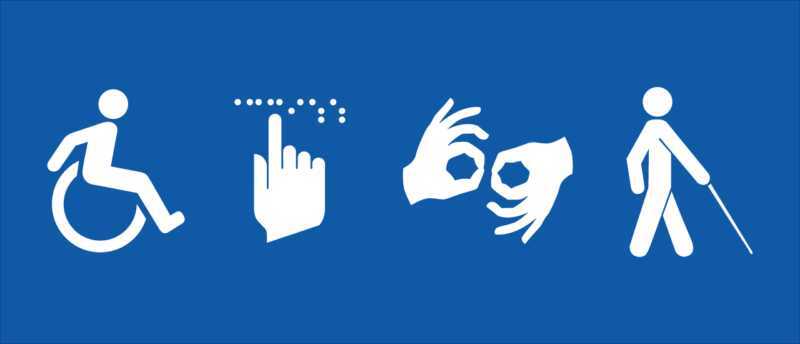Enacted in 1990, the ADA ensures equal access and opportunities in workplaces, schools, transportation, and most public and private places that are open to the general public.
What Is the Purpose of the ADA?
At its core, the ADA aims to provide people with disabilities the same rights and opportunities as everyone else. The law is divided into five main titles, each focusing on different areas of public life:
Title I – Employment:
Prohibits discrimination in hiring, promotions, pay, and other employment practices. Employers with 15 or more employees must provide reasonable accommodations to qualified individuals with disabilities.Title II – Public Services:
Ensures that state and local governments provide equal access to services, programs, and activities.Title III – Public Accommodations:
Requires that private businesses (such as restaurants, hotels, theaters, and retail stores) make their premises accessible to individuals with disabilities.Title IV – Telecommunications:
Mandates accessible telecommunications services for individuals with hearing or speech disabilities.Title V – Miscellaneous Provisions:
Includes a variety of provisions relating to ADA enforcement and construction.
Who Is Protected Under the ADA?
The ADA defines a disability as:
A physical or mental impairment that substantially limits one or more major life activities,
A history of such an impairment, or
Being regarded as having such an impairment.
This broad definition covers a wide range of conditions—from mobility and vision impairments to chronic illnesses, psychiatric disorders, and more.
Service Animals vs. Emotional Support Animals Under the ADA
A common area of confusion is how the ADA treats service animals versus emotional support animals (ESAs). While both play important roles in the lives of people with disabilities, the law treats them very differently.
Service Animals:
Defined by the ADA as dogs (and in some cases, miniature horses) that are individually trained to do work or perform specific tasks for a person with a disability.
Tasks might include guiding a person who is blind, alerting someone who is deaf, pulling a wheelchair, or detecting seizures.
Have public access rights. They are allowed in restaurants, stores, hospitals, and other public areas—even where pets are not usually permitted.
Emotional Support Animals (ESAs):
Provide comfort and companionship for individuals with emotional or psychological conditions but are not trained to perform specific tasks.
Not recognized as service animals under the ADA.
Do not have public access rights. They are not permitted in public areas where pets are not allowed unless covered by other laws, like the Fair Housing Act (FHA) for housing accommodations.
Key ADA Protections in Practice
Accessibility Requirements: New buildings and renovations must comply with ADA Standards for Accessible Design.
Communication Access: Businesses and government agencies must provide auxiliary aids, such as sign language interpreters, if needed.
Reasonable Accommodations: Employers and service providers must modify policies and environments when necessary to accommodate people with disabilities.
How the ADA Is Enforced
The ADA is enforced by several government agencies:
Department of Justice (DOJ): Enforces Titles II and III.
Equal Employment Opportunity Commission (EEOC): Enforces Title I.
Individuals may also file lawsuits if their rights under the ADA are violated.
Final Thoughts
The Americans with Disabilities Act has transformed the landscape for people with disabilities, promoting inclusion, access, and dignity. While service animals are recognized under the ADA for their task-based assistance, emotional support animals are not granted the same legal access in public spaces. Understanding these distinctions helps ensure compliance with the law and supports respectful treatment of people with both physical and mental health needs.















